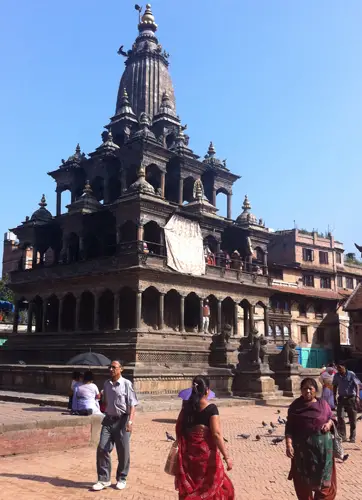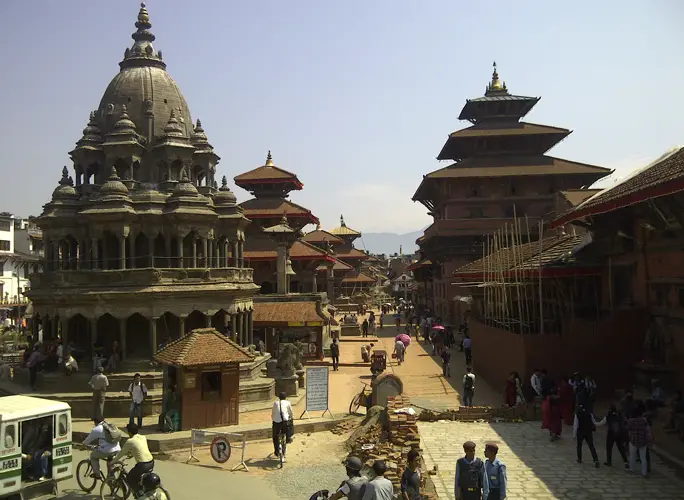 Nepal is one of the poorest and most underdeveloped countries in the world (with the top three located on the African continent). According to a 2008 estimate, the per capita income is 1,000 USD. This figure ranks Nepal on the 17th place in the top 20 poorest countries.
Nepal is one of the poorest and most underdeveloped countries in the world (with the top three located on the African continent). According to a 2008 estimate, the per capita income is 1,000 USD. This figure ranks Nepal on the 17th place in the top 20 poorest countries.
Most Nepali work in agriculture, but many families can’t even afford to eat rice (an Asian staple) on a daily basis. Agriculture highly depends on altitude, as changes in altitude affect climate. Carpet weaving is an important sector in the export economy of Nepal. The largest service industry is tourism, but more than half of the foreign currency earned from tourism leaves Nepal, as imported goods are needed to support tourism.
Nepal’s most arresting landscape, the Himalaya, is vulnerable to deforestation as locals rely on trees for about 80% of their energy needs. Most Nepalis cook and heat using only firewood. At the same time, due to the increase in the number of motor vehicles in the Kathmandu Valley, air pollution levels are now among the highest in the world.
Nepal is a very hierarchical society, influenced by the caste system. This system originated in Hinduism, the dominant religion, and was codified by the early Malla kings in the 13th century. Nepal’s population can be divided into four main groups: 1) the Hindu caste groups; 2) the hill tribes; 3) the Bhotes; and 4) the Newar.
1) The people in the Hindu cast groups migrated to Nepal between the 12th and the 14th century. They were driven from their homes in India by the Muslim invaders. They are originally of Aryan stock and have Caucasian features, but with a dark complexion. They brought with them their Indo-Aryan language, which eventually evolved into Nepali, the national language of Nepal.
2) The ancestors of Nepal’s many hill groups crossed from Tibet or followed the mountain trails from Burma (today Myanmar). The hill people have Mongoloid features and speak their own language. They practice a religion that is often a combination of Buddhism and Hinduisms, plus elements of animism. The hat the hill people wear, the topi, is the national hat of Nepal. The khukuri, worn by many hill men, is the traditional Nepali knife and has a curved blade. It is usually tucked in a long cloth wrapped around the waist.
The largest of the hill groups is called Tamang, which in Tibetan means “horse trader,” suggesting their initial occupation centuries ago. They are also the most independent, retaining their own language and Buddhist religion while many other groups fell under the increasing Hindu influence. The Sherpas live mainly in the high valleys of the Everest region. Their name has become the equivalent of “mountain guide” to most tourists. Actually, in Romanian, the word serpas means exactly that!
3) The Bhotes live in the north of the country and their culture is essentially Tibetan, Bho being another name for Tibet. They are farmers, sheep and yak herders, and hoteliers.
4) The Newar are the indigenous inhabitants of the Kathmandu Valley, where they have been living for the past 1,500 years. Their language, the most difficult in the world (out of 2,650 languages and 7,000 dialects!), originated from a mixture of Tibeto-Burmese and Sanskrit. It was the Newar who built most of the temples and crafted most of the sculptures Kathmandu is known for.
Bibliography: Nepal by Jon Burbank (Marshal Cavendish, 2002)


